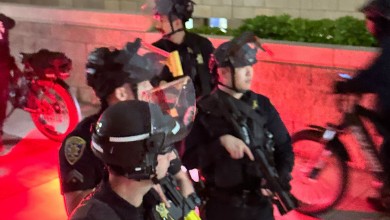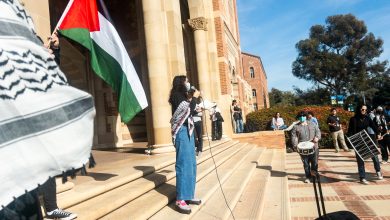What “Operation Varsity Blues” Reveals About Systemic Privilege in College Admissions

Photo by Mark Bonica via CreativeCommons
On March 12, federal charges were unveiled following the FBI’s investigation “Operation Varsity Blues,” the largest college scandal ever prosecuted. The charges allege that 33 wealthy parents, including celebrities, investment bankers, corporate executives, and well-established attorneys, paid millions of dollars in bribes to secure their children admission to top universities, such as Yale, Stanford, Georgetown, and the University of Southern California. William Singer, the mastermind behind the college admissions scandal, took payments to fabricate student records, bribe officials to alter answers on college entrance exams, and buy off coaches to falsely mark children as recruits on sports teams to guarantee admission.
Following the news, Chancellor Gene Block sent an email to the UCLA campus that asserts, in part, “that UCLA, like the other universities, was the victim of an alleged crime.” UCLA men’s soccer coach Jorge Salcedo was placed on leave after being indicted for conspiracy to commit racketeering. Salcedo allegedly accepted bribes of $200,000 to help two students gain admission by falsely designating them as soccer players on UCLA’s Division 1 soccer team, even though neither of them played competitively.
On March 14, UCLA was named among several elite universities in a federal class-action lawsuit filed by two Stanford University students seeking damages for students who applied to the accused universities between 2012 and now. The lawsuit alleges that applicants were denied a fair chance for admission because the universities failed to ensure that the admissions process was “fair and free of fraud, bribery, cheating, and dishonesty.”
UCLA’s role in the college admissions scandal is not a one-off case of bribery and deception. In April, it was revealed that UCLA has been aware of the “legal” donations connected to student admissions for years. At least “two students with limited or nonexistent credentials” were admitted as athletes after donations of $100,000 to the athletics department.
The college admissions scandal unmasks the height of disparity that is deeply rooted in higher education. “Operation Varsity Blues” exposes wealth and status as corrupting forces that manipulate the admissions process, exacerbate income inequality, and restrict opportunity on university campuses.
The hypercompetitive college admissions game deserves scathing criticism, but the inequities of the U.S. education system start as early as preschool. A recent report published by EdBuild, a non-profit that examines state policies for funding public education, reveals that predominantly white school districts receive, in total, $23 billion more in funding than districts that primarily serve students of color. How is this possible? Inequalities in school funding are tied to the history of Jim Crow and the long-lasting effects of redlining, the systematic denial of bank mortgages in Black neighborhoods. The reason majority-minority schools are supremely underfunded and under-resourced is no mystery: around 36 percent of school funding comes from local property taxes, and redlining devalues homes in Black neighborhoods.
In the midst of the admissions scandal, the decades long affirmative action debate fervently persists. In July 2018, the Trump administration rescinded Obama-era policy guidelines on affirmative action that called on universities to consider race as a factor in admissions. Opponents of affirmative action perpetuate the narrative that it “discriminates” against non-minorities and grants people of color admission to schools they otherwise do not “qualify” for. Meanwhile, some elite universities enroll more students in the top 1 percent than the bottom 60 percent combined, and others, like Harvard University, prioritize legacy applicants, who boast an acceptance rate of 33 percent. These are advantages of whiteness in U.S. college admissions.
As students approach high school, a meritocratic arms race begins. Elite college preparatory schools, private tutors and college counselors, and expensive abroad programs and extracurriculars are all perfectly legal, segregating apparatuses that channel students of wealth into the world’s top universities. When low-income students make up just 3 percent of America’s most elite colleges, we should call into question whether or not higher education is a ladder of social mobility after all. It seems that college, once regarded as an “equalizer,” is instead a reinforcer of existing wealth.




